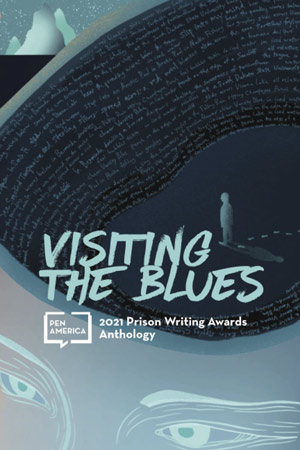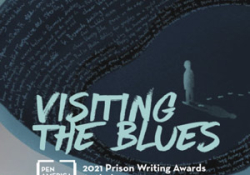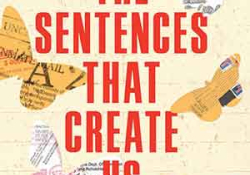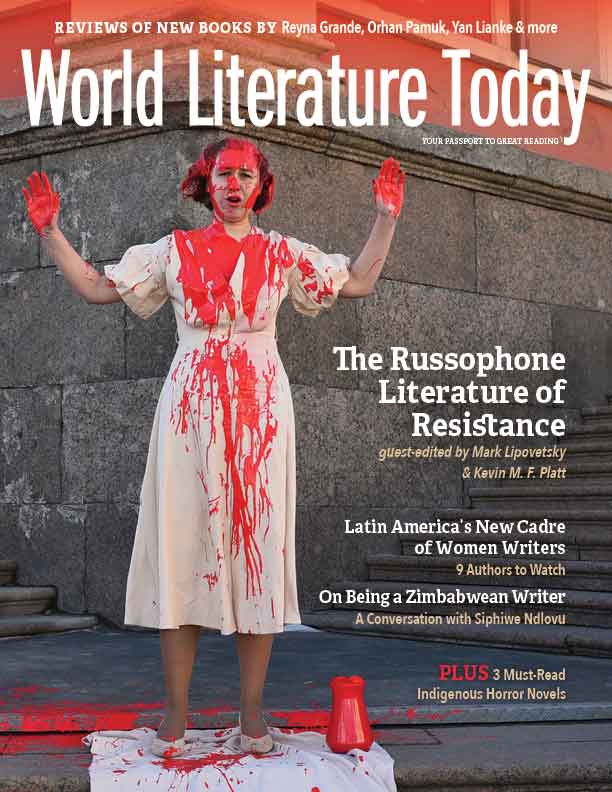Visiting the Blues: PEN America 2021 Prison Writing Awards Anthology by PEN America
 New York. PEN America. 2022 (©2021). 417 pages.
New York. PEN America. 2022 (©2021). 417 pages.
IN KEN BURNS’S 2001 DOCUMENTARY series Jazz, saxophonist Branford Marsalis says, “The blues are about freedom. You know, there’s liberation in reality. And when they talk about these songs, when they talk about being sad, the fact that you recognize that which pains you is a very freeing and liberating experience.” In this anthology of award-winning prison writing, with its title that references the blues, there’s plenty of talk about being sad and worse, and there’s plenty of freedom and liberation grounded in reality too.
Published in 2022 as part of PEN America’s Prison Writing Program, which was founded in 1971 after the Attica prison riots, this annual awards anthology is open to “anyone detained in a federal, state, or county prison or jail” and includes five to six pieces selected by thirty-plus readers in each of these categories: nonfiction essay, nonfiction memoir, fiction, poetry, and drama. The introduction by Robert Pollock discusses his suspicions as a formerly incarcerated writer about what he imagined to be “privileged, snooty, and distant readers” as well as the community he now knows the program and its awards create. The anthology closes with an insightful and moving section of mentor/mentee letters related to the L’Engle-Rahman Award for Mentorship in which three mentors on the outside and three mentees on the inside discuss their professional and human relationships.
While there may be liberation in reality, no one said reality would be easy, and most of the pieces in this anthology reflect this. Prison is the setting for many; others feature hardscrabble life on the outside before prison, with poverty, abuse, and drugs being common elements. Loneliness, despair, suicide, violence, and death are common topics. This isn’t surprising given what we know about the US prison system, which incarcerated writer and mentee Daniel Throop describes as follows in his letter: “Contemporary American prisons function as social slaughterhouses wherein community ties and human identities are systematically chopped into mince meat.” Overall, it’s not a light or easy read, which testifies to the vivid, difficult realities it portrays.
But this anthology is also a testament to survival, change, creativity, and liberation, even in the shadow of the slaughterhouse. George T. Wilkerson’s nonfiction essay “Vacant Lots and Aviaries,” a rich, complex meditation on survival, self-improvement, and the clandestine feeding of birds in the recreation yard by death-row inmates in Central Prison in Raleigh, North Carolina, clearly conveys this in the following passage: “The walls press us into each other and toward the only space left open to us: UP. The place from which that thing with feathers descends. We go to catch and sing the sun in flight. . . . We are detained but not defeated.” These are powerful and empowering words from someone who, despite deep contrition and change, knows he will never leave prison and quite likely might be executed there.
Other standouts include Chicano writer and artist Paul S. Sedillo’s nonfiction essay “Cultural Time Roads” with its New Mexico–based insights on the connections between colonialism, racism, and the contemporary prison system; Jason Hawkins’s nonfiction memoir piece “Before the Virus,” which compassionately reflects on creativity and despair in a South Texas prison in light of his friend’s suicide attempt; and Heather Jarvis’s nonfiction memoir piece “Frozen Pancakes,” which details her descent into drug addiction in an attempt to be the perfect single mother, her in-prison sobriety and self-improvement, and her plans to be her imperfect yet honest self with her daughters when she gets out.
Also notable are Austin Holland’s fiction piece “White-Hot/Black-Hot,” in which a veteran shares his insights on the physical and emotional deaths caused by the US occupation of Iraq; Sheryl L. Nelms’s poem “The Blues,” a meditation on both the color and state of mind; Timothy Burke’s poem “Momento Mori,” a sparse, imagistic account of the glasses left behind after a prison suicide; K. Robert Schaeffer’s drama piece “The Stairs,” a brilliant, Beckettian meditation on the absurdity of life and hierarchies in prison; and Leo Cardez’s drama piece “Just Another Day at the Zoo,” a wonderful yet ultimately tragic character-driven study of two very different approaches to surviving on the inside.
While everything in the anthology is worthwhile, given each piece’s unique perspective and voice, the quality as contemporary literature does vary quite a bit, and with only three women among the twenty-nine published authors, better gender parity would be something to consider for future awards. That said, overall this is an excellent anthology for anyone who wishes to truly hear and understand the inside experience of some of the most challenged yet resourceful Americans and to witness the liberatory power of creativity via the written word.
Timothy Bradford
University of Oklahoma



